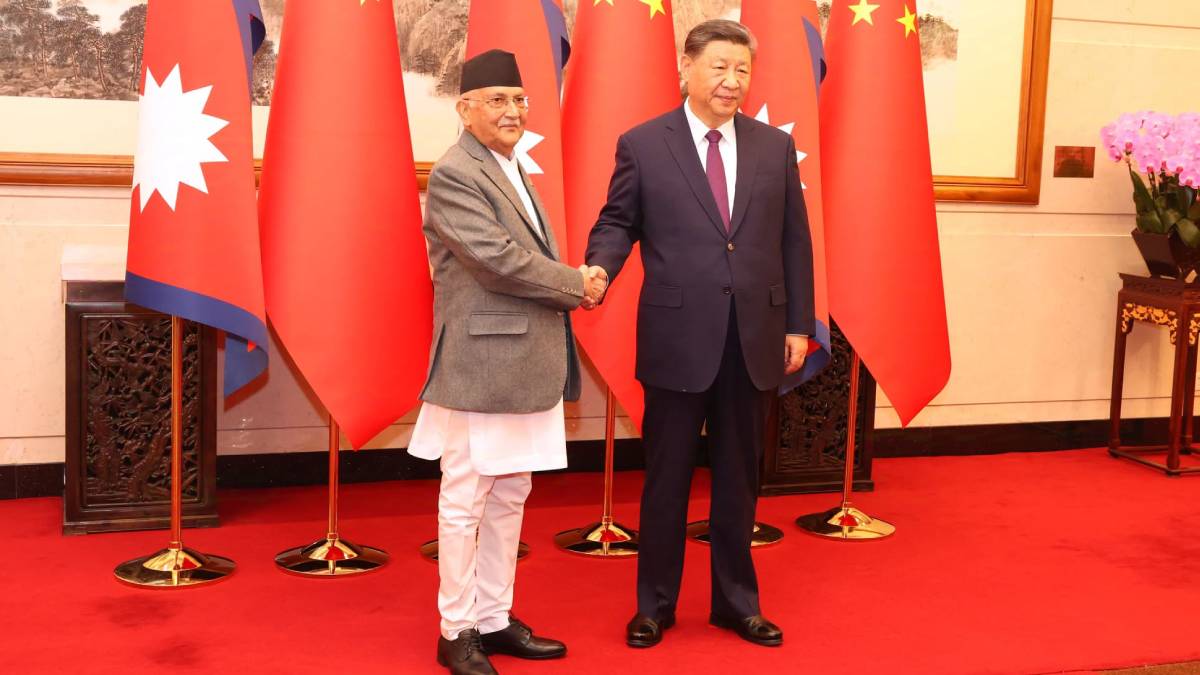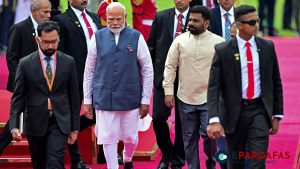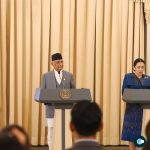
Nepal-China BRI Framework Signed Amid Concerns Over Aid Modalities
Seven years after signing the Memorandum of Understanding (MoU) on China’s Belt and Road Initiative (BRI), Nepal has formalized a framework for BRI cooperation. The agreement, signed during Prime Minister KP Sharma Oli’s ongoing visit to Beijing, has stirred skepticism over its potential implications for Nepal’s economic sovereignty and financing model.
The framework, signed by Acting Foreign Secretary Amrit Bahadur Rai and Liu Sushe, Deputy Head of China’s National Development and Reform Commission, will remain valid for three years, with automatic extensions unless terminated. Despite the high-profile nature of the agreement, Nepali officials admit that its details offer little novelty and primarily reiterate points from the original 2017 MoU.
The primary sticking point in negotiations was the financing model. Nepal sought grants for BRI projects, mirroring terms offered by multilateral agencies like the World Bank and Asian Development Bank. However, China resisted the term “grant,” replacing it with “aid financing,” which remains ambiguously defined.
A member of the Nepali delegation in Beijing revealed, “We had to propose a middle path using the term ‘aid financing.’ This compromise reflects the challenges in asserting Nepal’s interests against Chinese priorities.”
Critics argue this terminology leaves room for loan-based financing, potentially burdening Nepal with unsustainable debt. Observers point to Sri Lanka’s experience with China-funded projects as a cautionary tale, raising alarms about possible debt traps.
Initially, China proposed a broad list of projects, including a trans-Himalayan connectivity network. However, Nepal pared this down significantly to ten priority projects, including road and railway construction, transmission lines, and educational institutions.
While these projects address Nepal’s infrastructure needs, experts note a power imbalance in negotiations. China’s insistence on project viability and its control over technical and financial oversight could limit Nepal’s autonomy in execution.
The framework agreement has been heralded by the Nepali government as a step forward in bilateral relations. Prime Minister Oli lauded the development on social media, emphasizing its potential to strengthen economic ties. Yet, analysts contend that the framework’s vague terms and reliance on Chinese goodwill provide little assurance of tangible benefits.
Foreign Minister Arzu Rana Deuba admitted the framework is more symbolic than groundbreaking. “It should be understood as a continuation of the MoU signed in 2017,” she said. This admission has fueled criticism that Nepal’s involvement in the BRI remains a diplomatic gesture rather than a strategic economic partnership.
With Nepal’s list of proposed projects finalized, the actual implementation hinges on further negotiations, raising questions about timelines and feasibility. The lack of clarity on financing, combined with China’s history of prioritizing its strategic interests, underscores the challenges Nepal faces in ensuring value for money and equitable collaboration.
As Nepal deepens its engagement with the BRI, skepticism grows over whether the benefits will outweigh the potential risks of dependency and debt.













Comments